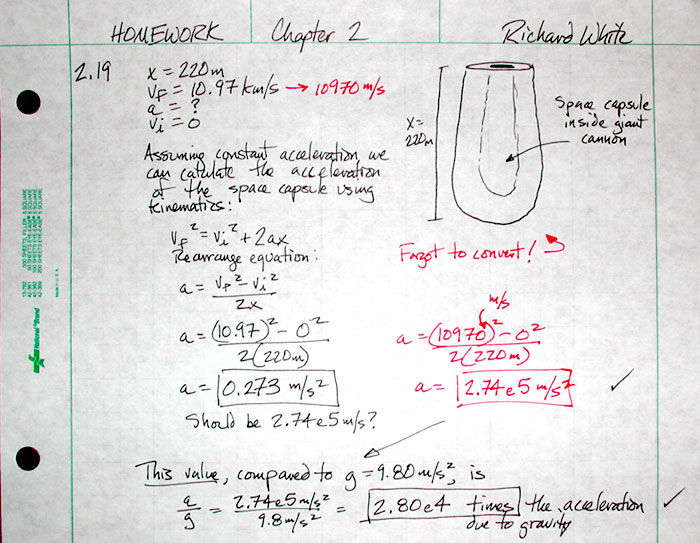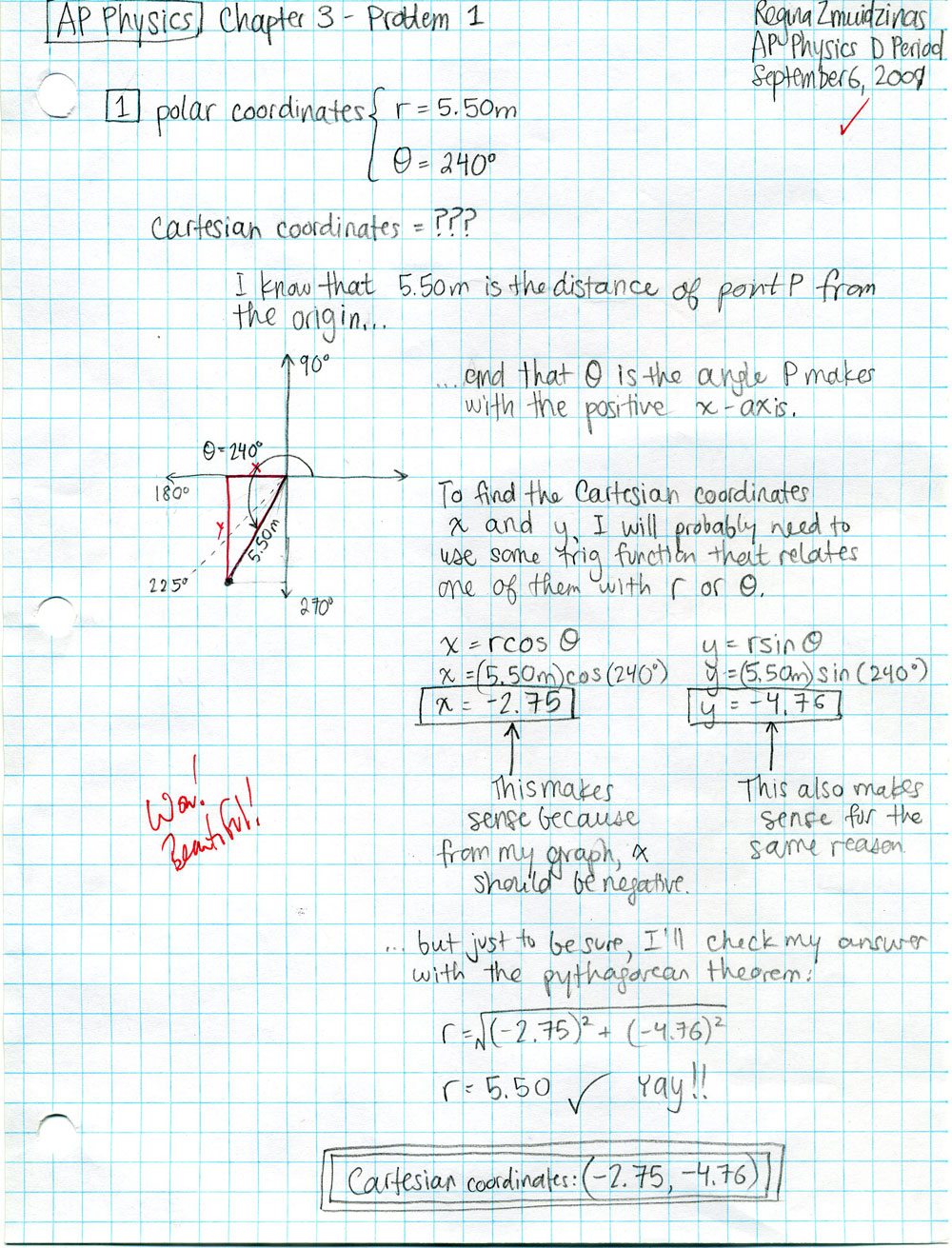Homework (Practice Problems) in the AP Physics C Course
Including:
- Introduction
- A General Approach to Doing Practice Problems
- Examples of Practice Problems (Good and Bad)
Introduction
A few general notes regarding Practice Problems in the course:
- Most days you'll be assigned 3-6 practice problems of varying difficulty.
- You'll need to complete these problems every day. Physics, like math, is highly sequential in nature, and you will quickly find yourself falling behind in the course if you don't keep up with the material.
- The practice problems have been carefully selected by the instructor both to help you practice material that we've learned and to give you experience attempting problems that you may not initially understand how to solve.
- For these problems, the answers (the final result) and/or solutions (more extensive details on the problem-solving strategy) are usually available to you online on our this website. Getting the correct answer, while admirable, is not nearly as important as being able to demonstrate that you know how to solve the problem. Your completed practice problems will include well-written solutions or explanations for the problems given.
- If you find that you don't have some idea of how to problem in the first few minutes of working at it, consider examining the classroom presentations on that topic, or the solutions for a hint on where to get started. If, after attempting the problem for 10-15 minutes, you haven't been able to solve it, leave space on the page for additional work later and move on to the next problem.
- When working on problems, feel free to check in with other students on the solution or ask the instructor for additional information on the problem. These occasions when you've wrestled with a problem, and then take a look at it again later, are important.
- You are welcome to work with others as you do homework, but in the end, it's important for you to have your own understanding of the material. The work you do on homework should be your own, and not copied from anyone else or directly from the solutions. See the Academic Integrity section for a more complete explanation.
- Often, you'll find that getting the correct answer to a problem will require several attempts, with work needing to be redone. It's helpful to perform new work in a different color of ink for easy identification (see example below).
- Homework/Practice problem assignments will be turned in each day to the instructor, with a small number of points awarded for completing and/or attempting to complete the work.
- Missing a practice problem assignment once every few weeks or turning an assignment in a day late isn't typically a cause for concern. Habitually missing assignments or falling behind will be disastrous in terms of your ability to keep up with the demands of the course.
A General Approach to Doing Practice Problems
More specific information on how to complete a homework solution is here:
- Begin each problem on a blank sheet of paper. You will be using a single sheet of paper for each problem that you solve.
- After reading the problem, you need to do three things, more-or-less all at the same time:
- draw a sketch of the situation
- write down the variables and values that have been given in the problem statement
- based on your experience and a little intuition, figure out what approach you think will be appropriate to helping you solve the problem.
- Also watch the video "How to do Physics Homework" (YouTube, 6 minutes)
- Select appropriate equations or formulae that you can use in your solution. Write down the equation(s) in variable form, then manipulate to get an expression for the desired unknown value, clearly showing your steps.
- As you work, write brief annotations ("blurbs") that will explain your reasoning, and the steps you've taken in your solution.
Annotating your work is an important part of your solution, and one that you might be tempted to overlook. In order to encourage you to develop good problem-solving habits, at the start of the year you'll be required to use a single page of paper for each single problem that you solve. That's right: one problem per page. Use as much of the page as possible, and be sure to include annotations of your work. - Substitute in known values for variables in the equations and use it to calculate the answer.
- Write down the final answer with units and a box around them.
- Check answer with known answer, if possible, and correct original work using pencil or pen of a different color.
Examples of Solutions (Good and Bad)
The original problem reads:
Jules Verne in 1865 suggested sending people to the Moon by firing a space capsule from a 200-m-long cannon with a launch speed of 10.97 km/s. What would have been the unrealistically large acceleration experienced by the space travelers during launch? Compare your answer with the free-fall acceleration 9.80 m/s2.
One essentially worthless solution is this first one. There is almost no information here for the instructor to examine, and no way of identifying whether the student understood the problem-solving process.

A correctly-written solution to this problem is given below. Note the use of "blurbs," brief written explanations of what is being done mathematically, and corrections that were added in red after the original work was done.

Here is another example of a student's good work on a different problem.

And finally, this example shows another student's work, with corrections. At first glance this looks like it's a bit of a mess, but the student has done a nice job of annotating their edits. This is excellent work.
